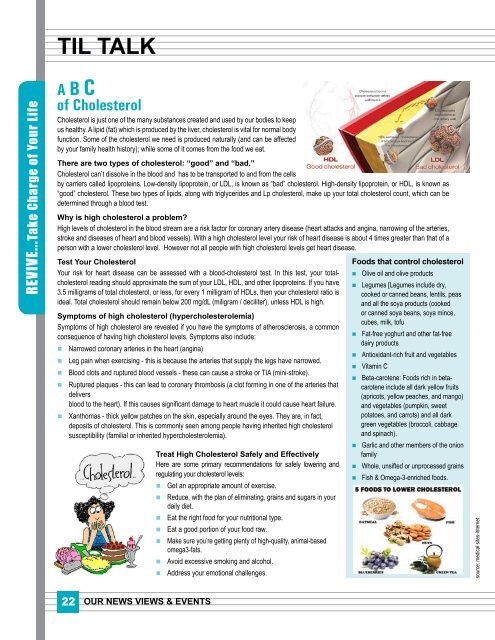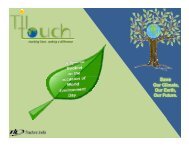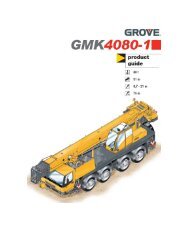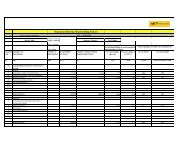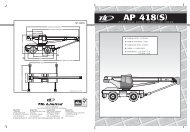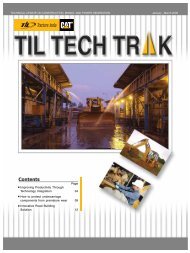Vol 22 - Issue 1 - 2013 - til india
Vol 22 - Issue 1 - 2013 - til india
Vol 22 - Issue 1 - 2013 - til india
- No tags were found...
Create successful ePaper yourself
Turn your PDF publications into a flip-book with our unique Google optimized e-Paper software.
TIL TALKREVIVE...Take Charge of Your LifeA B Cof CholesterolCholesterol is just one of the many substances created and used by our bodies to keepus healthy. A lipid (fat) which is produced by the liver, cholesterol is vital for normal bodyfunction. Some of the cholesterol we need is produced naturally (and can be affectedby your family health history); while some of it comes from the food we eat.There are two types of cholesterol: “good” and “bad.”Cholesterol can’t dissolve in the blood and has to be transported to and from the cellsby carriers called lipoproteins. Low-density lipoprotein, or LDL, is known as “bad” cholesterol. High-density lipoprotein, or HDL, is known as“good” cholesterol. These two types of lipids, along with triglycerides and Lp cholesterol, make up your total cholesterol count, which can bedetermined through a blood test.Why is high cholesterol a problem?High levels of cholesterol in the blood stream are a risk factor for coronary artery disease (heart attacks and angina, narrowing of the arteries,stroke and diseases of heart and blood vessels). With a high cholesterol level your risk of heart disease is about 4 times greater than that of aperson with a lower cholesterol level. However not all people with high cholesterol levels get heart disease.Test Your CholesterolYour risk for heart disease can be assessed with a blood-cholesterol test. In this test, your totalcholesterolreading should approximate the sum of your LDL, HDL, and other lipoproteins. If you have3.5 milligrams of total cholesterol, or less, for every 1 milligram of HDLs, then your cholesterol ratio isideal. Total cholesterol should remain below 200 mg/dL (miligram / deciliter), unless HDL is high.Symptoms of high cholesterol (hypercholesterolemia)Symptoms of high cholesterol are revealed if you have the symptoms of atherosclerosis, a commonconsequence of having high cholesterol levels. Symptoms also include:• Narrowed coronary arteries in the heart (angina)• Leg pain when exercising - this is because the arteries that supply the legs have narrowed.• Blood clots and ruptured blood vessels - these can cause a stroke or TIA (mini-stroke).• Ruptured plaques - this can lead to coronary thrombosis (a clot forming in one of the arteries thatdeliversblood to the heart). If this causes significant damage to heart muscle it could cause heart failure.• Xanthomas - thick yellow patches on the skin, especially around the eyes. They are, in fact,deposits of cholesterol. This is commonly seen among people having inherited high cholesterolsusceptibility (familial or inherited hypercholesterolemia).Treat High Cholesterol Safely and EffectivelyHere are some primary recommendations for safely lowering andregulating your cholesterol levels:• Get an appropriate amount of exercise.• Reduce, with the plan of eliminating, grains and sugars in yourdaily diet.• Eat the right food for your nutritional type.• Eat a good portion of your food raw.• Make sure you’re getting plenty of high-quality, animal-basedomega3-fats.• Avoid excessive smoking and alcohol.• Address your emotional challenges.Foods that control cholesterol• Olive oil and olive products• Legumes [Legumes include dry,cooked or canned beans, len<strong>til</strong>s, peasand all the soya products (cookedor canned soya beans, soya mince,cubes, milk, tofu• Fat-free yoghurt and other fat-freedairy products• Antioxidant-rich fruit and vegetables• Vitamin C• Beta-carotene: Foods rich in betacaroteneinclude all dark yellow fruits(apricots, yellow peaches, and mango)and vegetables (pumpkin, sweetpotatoes, and carrots) and all darkgreen vegetables (broccoli, cabbageand spinach).• Garlic and other members of the onionfamily• Whole, unsifted or unprocessed grains• Fish & Omega-3-enriched foods.source: medical sites-internet<strong>22</strong>OUR NEWS VIEWS & EVENTS


